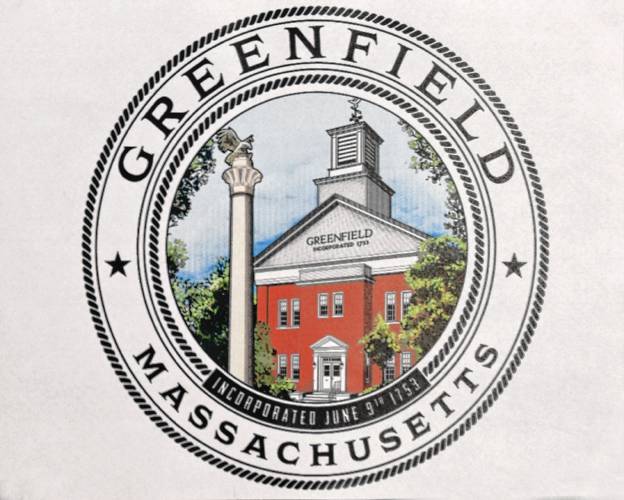Greenfield councilor pitches zoning changes to address housing crisis

New City of Greenfield seal. Staff Photo/PAUL FRANZ
|
Published: 07-05-2024 12:33 PM
Modified: 07-05-2024 6:36 PM |
GREENFIELD — In an effort to mitigate rising housing costs, which correlate with an increase in homelessness, At-Large Councilor John Garrett is drafting a list of proposed zoning amendments to encourage the creation of more densely populated housing in the city.
Some of Garrett’s proposed changes to current zoning laws would allow residents to create accessory dwelling units, also known as “in-law apartments,” by right, allow for the construction of multi-family housing in the city’s semi-residential zoning districts and allow for the construction of row houses — or shoulder-to-shoulder houses with a shared roof — in the city.
“There’s a lot of evidence that homelessness increases in places with higher costs of housing,” Garrett said. “The goal is to increase the supply of housing under the principle that will, through supply and demand, lower prices for folks. … We have a housing affordability crisis.”
According to Jeff Sauser, a principal project designer for the urban planning consultant CommunityScale, the average monthly housing cost in Greenfield in 2024 is $3,400, while, on average, residents can only afford to pay $1,740 a month for housing.
“The reason why we have constrained supply of housing, in a lot of ways, is because zoning after the 1950s was developed to ensure that most neighborhoods and most places are for single-family homes,” Garrett said.
In an effort to create zoning policies that will grow the housing supply, Garrett said he will review the city’s housing density requirements and push for zoning changes that allow multi-family housing, or housing with four or more units, in Greenfield’s semi-residential zones.
Currently, the city allows single-family, two-family and three-family homes in all of its residential districts by right, with multi-family homes (four or more units) allowed only in the city’s central commercial zone.
Speaking on Garrett’s proposed housing density zoning changes, Planning Director Eric Twarog said that he, years ago, proposed allowing multi-family housing in multiple city districts, but City Council voted down the motion.
Article continues after...
Yesterday's Most Read Articles
“You’d be hard-pressed to find another community in western Mass that allows that. It’s progressive,” Twarog said. “That is a very good suggestion, it should be done. It is a new council, and they will likely vote it in, given the new membership and the current housing crisis in America.”
Garrett said that by amending housing density zoning laws, the city would not only be able to expand its housing stock, but diversify it, creating smaller units for singles, couples without children and the elderly.
Other proposed changes, Garrett explained, include allowing the creation of accessory dwelling units by right, as opposed to the city’s current practice of requiring a special permit.
He also brought up the proposed resurgence of row houses, which he said were initially prohibited in zoning laws in the early 1900s because of their hazardous fire conditions.
“A row house allows density of development. Basically, it’s a geometry problem, the problem of housing. You can’t build houses with huge setbacks and expect there to be room to build enough housing to meet the demand,” Garrett said. “A row house is not anywhere near as fire dangerous as it was back in the 1920s.”
Garrett plans to bring the proposed zoning amendments before Twarog in coming months before it goes to the Economic Development Committee discussion in August. He said after the proposed changes are finalized, they will then likely be sent to the Planning Board for review and City Council for a vote.
At the earliest, Garrett said the proposed zoning changes can be put before the council in October.
“There’s greater eyes on this nationwide in municipalities — state governments and even the federal government’s going to have to come up with some regulations to deal with the housing crisis,” Twarog said. “We’re doing our part on the local level in Greenfield.”
Anthony Cammalleri can be reached at acammalleri@recorder.com or 413-930-4429.






 ‘It’s a Wonderful Night in Turners Falls’ showcases village businesses, nonprofits
‘It’s a Wonderful Night in Turners Falls’ showcases village businesses, nonprofits Sackrey Construction Co. of Sunderland celebrating 35 years in business
Sackrey Construction Co. of Sunderland celebrating 35 years in business Photo: As darkness falls
Photo: As darkness falls Leverett residents rap Kittredge compound plans, urge caution as negotiations for 400 homes move forward
Leverett residents rap Kittredge compound plans, urge caution as negotiations for 400 homes move forward 
